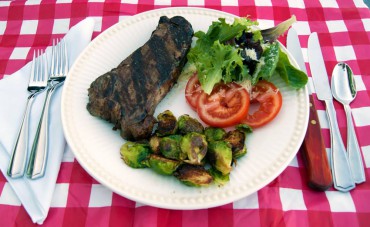 To master the art of grilling, it’s best to start with a piece of high-quality meat. While some supermarkets have been responding to the consumers’ demand for transparency, it’s still a good idea to find a great local butcher shop and get to know the people behind the counter. Typically your local butcher can offer up great selections, recipes and tips to help impress your guests.
To master the art of grilling, it’s best to start with a piece of high-quality meat. While some supermarkets have been responding to the consumers’ demand for transparency, it’s still a good idea to find a great local butcher shop and get to know the people behind the counter. Typically your local butcher can offer up great selections, recipes and tips to help impress your guests.
The typical meat cuts used in the quintessential American barbecue include the beef ribeye, New York-style strip, tenderloin or filet mignon and top sirloin steaks. Pork and lamb selections usually focus on rib chips and loin chops.
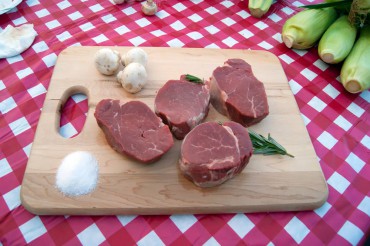 However, don’t be afraid to step out from the norm and be adventurous in your selections. There are some great economical and flavorful cuts that can also yield great results. The tri-tip, culotte, petite tender, flap, flat iron, skirt and flank steak are all examples of nontypical beef cuts that can yield amazing meals if prepared properly.
However, don’t be afraid to step out from the norm and be adventurous in your selections. There are some great economical and flavorful cuts that can also yield great results. The tri-tip, culotte, petite tender, flap, flat iron, skirt and flank steak are all examples of nontypical beef cuts that can yield amazing meals if prepared properly.
In the pork world, don’t be afraid to try out some country-style ribs. You might also consider a trip to the butcher shop as an opportunity to enjoy the subtle differences between animals raised and fed in a niche market.
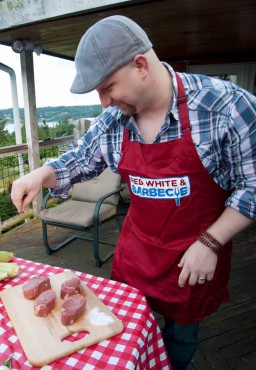
If you have never tried grass-fed and grass-finished beef, this is a great opportunity to step outside of the box a little. Other niche flavors include pork finished on acorns or hazelnuts, or even true free-range chickens that have fed on the natural bounty of Earth’s resources.
Once you have brought home some great meat, the focus is on how to season it in a way that will please the palate. On many high-quality cuts, a great salt and freshly ground pepper seasoning is not only sufficient, in many cases it is the preferred way to accentuate the natural flavors of the meat.
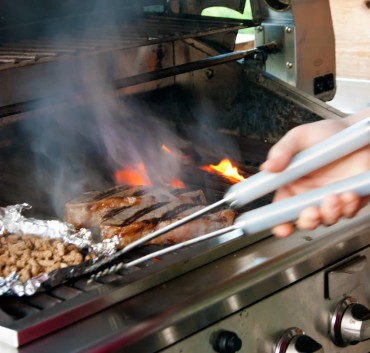 Other cuts go great with marinades. The beef flank steak is an example of a cut that yields great results when prepared prior to grilling with a simple marinade.
Other cuts go great with marinades. The beef flank steak is an example of a cut that yields great results when prepared prior to grilling with a simple marinade.
Because marinades can be strong and overpowering, it’s best to start simple. A good marinade made with extra-virgin olive oil, salt, pepper and crushed garlic is the best place to start. Other ingredients that tend to add depth in marinades include shallot, ginger, rosemary and other savory flavors.
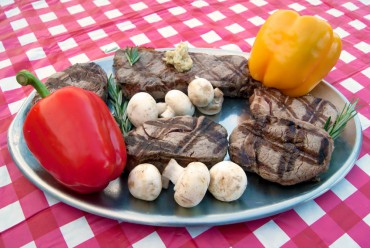 Keep in mind that many store-bought marinades are filled with water and sugar. When sugar hits a hot grill, a process of caramelization begins very quickly. If not looked after carefully, this can create a bitter, burnt mass. Save those sugary marinades as a finishing sauce.
Keep in mind that many store-bought marinades are filled with water and sugar. When sugar hits a hot grill, a process of caramelization begins very quickly. If not looked after carefully, this can create a bitter, burnt mass. Save those sugary marinades as a finishing sauce.
Once you have made your decisions about seasoning and have gathered your ingredients together, it’s time to decide when to liberate the meat from its imprisonment in the fridge. That’s right, get it out there on the counter and let it come to room temperature.
Typically an hour or so is perfectly fine, allowing the cell structure to start to relax from a cold state. This will help greatly once that steak hits an extra hot grill. Think of it as warming up before you run a 5K.
Go ahead and crank up your grill and get those grates searing hot. Some people prefer charcoal or wood-fired, while others prefer gas-powered units. The principles of grilling remain the same regardless of choice. However, grilling over charcoal or wood does add a different flavor profile that many prefer.
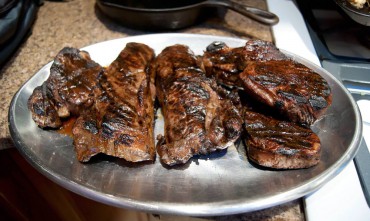 This can also be achieved using wood chips inside of a gas grill. By creating an aluminum pouch, you can interject a flavorful smoke into your gas grill that is typical in that of charcoal or wood-powered grills. For a stronger smoke flavor, use hard woods such as mesquite, hickory, alder or oak. For a sweeter, milder flavor, use woods such as apple or cherry.
This can also be achieved using wood chips inside of a gas grill. By creating an aluminum pouch, you can interject a flavorful smoke into your gas grill that is typical in that of charcoal or wood-powered grills. For a stronger smoke flavor, use hard woods such as mesquite, hickory, alder or oak. For a sweeter, milder flavor, use woods such as apple or cherry.
When a cold steak or chop hits a hot grill, the grill temp will actually lower considerably and reduce the likelihood of the most flavorful of all barbecue conditions, the Maillard reaction. Simply put, the Maillard reaction is the browning of the meat, which consequently produces the unique, flavorful compounds that are typical of a great cooked steak, also commonly referred to as “umami-like” flavor.
This is why the resting period prior to cooking is very important. Let that steak sit on the grill for a few good minutes, making sure not to move it before it can get a good browning effect. Depending on the thickness of your steak, you may only need to flip your steak once after four or five minutes to produce a medium-well steak. To produce those fancy crosshair grill marks, you can turn your steak 45 degrees per side to create the effect.
 One suggestion is to cook beef, lamb and pork to medium-rare doneness. While many prefer their steaks and chops well done, you’re not doing yourself any favors. As long as the meat has been properly handled, steaks cooked to medium-rare are just as safe as those cooked well-done. Cooking to medium-rare means a more flavorful, tender and juicy steak. Use a meat thermometer to avoid undercooking and overcooking.
One suggestion is to cook beef, lamb and pork to medium-rare doneness. While many prefer their steaks and chops well done, you’re not doing yourself any favors. As long as the meat has been properly handled, steaks cooked to medium-rare are just as safe as those cooked well-done. Cooking to medium-rare means a more flavorful, tender and juicy steak. Use a meat thermometer to avoid undercooking and overcooking.
Once you have cooked the steak to perfection, it’s time to pull that baby off the grill and let it rest again without disturbing it. At least five minutes will be sufficient. By doing so, you are letting the steak relax after putting it through the stress of the cooking process.
During this stage, the remaining moisture in the steak will relax and begin to redistribute its juices throughout the entire cut. This will make your steak more consistent bite after bite.
By following these simple tips, you are sure to impress your family and friends at your next grilling and chilling function. Bon appétit!




























Comments